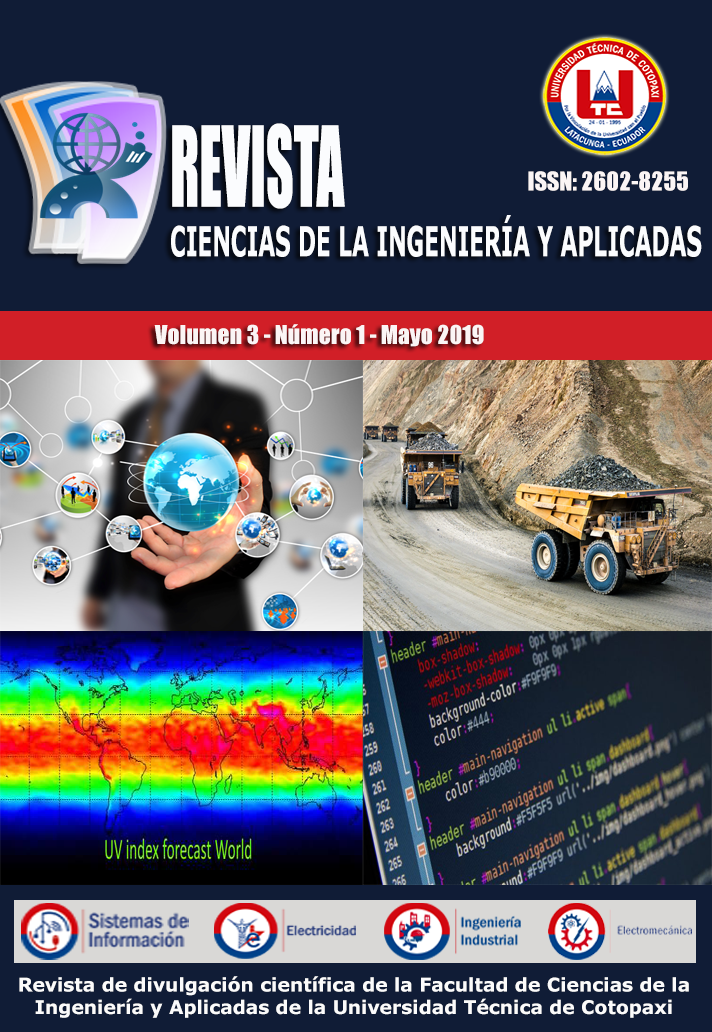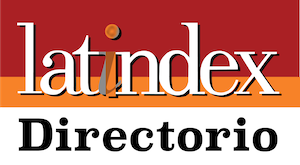Obtaining and comparing the solar radiation index in the ¨San Felipe¨ neighborhood of the city of Latacunga in 2019
Abstract
In the following research work, a device designed to measure the index of solar radiation of the UV-B type, considered dangerous for the skin, was developed. The measurement is carried out using an optical sensor and UV filter. The sensor delivers the intensity of UV radiation, through the established programming an indicator light will turn on according to a color code that is easy to interpret for people and that is already established by the World Health Organization (WHO). The global solar UV index is a measure of the intensity of solar UV radiation on the Earth's surface where the violet tone is the most dangerous while green indicates no risk. This equipment provides necessary and educational information for adequate protection in places with direct sun exposure. Among them swimming pools, beaches, stadiums, among others. With this information it is possible to know how long you can remain exposed to the sun without risk of sunburn. In addition, a type-10 4GB card is incorporated into the design in which data will be stored that will allow knowing and making comparisons of the intensity of solar radiation in a determined period of time with other equipment already installed, thus also generating information as background information. for future similar projects. What is mainly intended is to take care of people's health through the information that this equipment will offer.
Downloads
References
(1) P. Cueva y J. Yépez , «SOCIEDAD DE LUCHA CONTRA EL CÁNCER, SOLCA NÚCLEO DE QUITO,» Epidemiología del Cáncer en Quito 2006 - 2010, pp. 8-11, 2014.
(2) Adalucía, «Radiaciones,» p. 2, 4 Septiembre 2009.
(3) F. Ebel, «Sensores para la técnica de procesos y manipulación,» Sensores de proximidad, vol. 28, nº 094 342, p. 12, 28 Enero 1993.
(4) P. Instruments, «Pce Instruments,» (En línea). Available: https://www.pce-instruments.com/french/slot/4/download/94983/hoja-datos-pce-uv-34_1017583.pdf. (Último acceso: 4 Enero 2019).
(5) M. L. &. J. Pujol, «Robotica Libre con Arduino,» 2017. (En línea). Available: http://educalab.es/documents/10180/640047/TallerRoboticaLibreArduino.pdf/c77adbfd-606a-4fbe-acd4-11630927b5a4. (Último acceso: 4 Enero 2019).
(6) S. Group, «SD Specifications,» Physical Layer Simplified Specification, vol. I, nº 2.00, pp. 12-13, 2006.
(7) U. N. d. l. Plata, «Catedra,» (En línea). Available: https://catedra.ing.unlp.edu.ar/electrotecnia/electronicos2/download/Herramientas/Resistores.pdf. (Último acceso: 09 Febrero 2019).
Copyright (c) 2019 Ciencias de la Ingeniería y Aplicadas

This work is licensed under a Creative Commons Attribution-NonCommercial-NoDerivatives 4.0 International License.
The authors who publish in this journal agree to the following terms:
- Creative Commons Attribution-NonCommercial-NoDerivatives License allows others to share the work with acknowledgment of authorship of the work and initial publication in this journal.
- Authors may separately establish additional agreements for the non-exclusive distribution of the version of the work published in the journal (for example, placing it in an institutional repository or publishing it in a book), with an acknowledgment of its initial publication in this journal.
- Authors are permitted and encouraged to disseminate their work electronically (for example, in institutional repositories or on their own website) before and during the submission process, as it can lead to productive exchanges, as well as further citation. earliest and largest of published works (See The Effect of Open Access) (in English).












